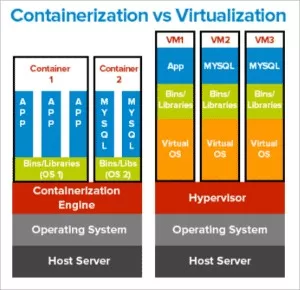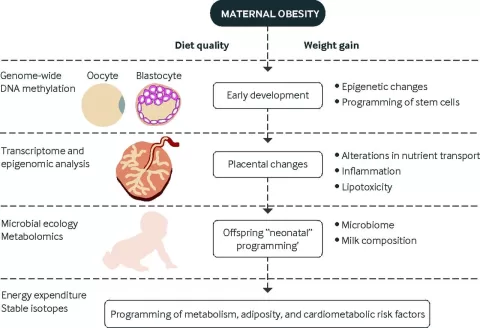Genomic epidemiology is at the forefront of modern public health, revolutionizing our approach to outbreak response and pathogen surveillance. By harnessing the power of genomic sequencing, researchers can track pathogens like SARS-CoV-2 with unprecedented precision, allowing for effective pathogen intelligence and early warning systems. This innovative field enables scientists to identify and monitor variations in pathogens, contributing to a deeper understanding of their evolution and spread. With tools such as wastewater surveillance, communities can uncover patterns of infection in real-time, aiding in quick public health interventions. As we move forward, the integration of genomic epidemiology will be crucial in shaping strategies to combat infectious diseases globally.
The study of pathogen genomics, often referred to as pathogen genetics or molecular epidemiology, is transforming how we manage disease outbreaks across populations. This multidisciplinary approach combines genomic data with epidemiological insights, enabling health officials to respond rapidly to emerging threats. Pathogen intelligence derived from comprehensive surveillance efforts, such as sequencing pathogens and monitoring environmental samples like wastewater, allows for better preparedness against widespread infections. As we delve deeper into the genomic landscape of pathogens, these insights will empower us to tailor intervention strategies effectively and mitigate the impact of future pandemics. Embracing these innovative techniques will enhance our understanding of pathogen dynamics in the population.
The Importance of Genomic Epidemiology in Public Health
Genomic epidemiology plays a crucial role in understanding and managing infectious diseases by providing insights into pathogen diversity, transmission dynamics, and disease burden in populations. This approach enhances traditional epidemiological frameworks by integrating genomic data, which allows for a more precise assessment of pathogens’ evolutionary pathways and their impact on human health. By leveraging genomic sequencing technologies, public health officials can monitor the emergence of novel pathogen variants, track outbreaks more effectively, and implement timely intervention strategies to mitigate further transmission.
The COVID-19 pandemic underscored the significance of genomic epidemiology in outbreak response. With comprehensive genomic sequencing efforts globally, scientists were able to rapidly identify and characterize SARS-CoV-2 variants, informing public health policies and actions. As a result, genomic epidemiology has emerged as a fundamental component in the toolbox for public health, assisting in forecasting potential disease trends and evaluating the effectiveness of control measures.
Pathogen Surveillance Through Genomic Data
Pathogen surveillance has transitioned with the advent of genomic technologies, leading to unprecedented capabilities in monitoring infectious diseases. Genomic data not only enables the detection of novel pathogens but also offers valuable information regarding existing strains in the population. This surveillance approach empowers scientists and health authorities to quickly respond to outbreaks, as identifying specific genetic markers can facilitate targeted intervention strategies. By analyzing genetic variations within pathogens, epidemiologists can decipher transmission patterns and the spread of antimicrobial resistance, ultimately leading to improved public health outcomes.
Moreover, the incorporation of pathogen genomic data into surveillance frameworks enhances the overall understanding of disease dynamics. For instance, wastewater surveillance, which analyzes viral loads in sewage systems, has proven to be an innovative method during the COVID-19 pandemic. This form of surveillance supplements traditional case reporting by providing real-time insights into community infection trends, serving as an early warning system for potential outbreaks.
Frequently Asked Questions
What is the role of genomic epidemiology in pathogen surveillance?
Genomic epidemiology plays a crucial role in pathogen surveillance by enabling the detection and monitoring of pathogens through genomic sequencing. This approach allows public health officials to identify novel pathogens, track case clusters, and understand markers of virulence and antimicrobial resistance, ultimately improving outbreak response strategies.
How has SARS-CoV-2 sequencing impacted outbreak response and pathogen intelligence?
The extensive global sequencing of SARS-CoV-2 has significantly shaped outbreak response and pathogen intelligence by providing over 17 million genomic sequences. This data has facilitated the identification of viral variants, helped track the spread of the virus, and contributed to a deeper understanding of the virus’s evolution, which is essential for effective public health interventions.
What is wastewater surveillance and how is it related to genomic epidemiology?
Wastewater surveillance involves detecting pathogens in wastewater to estimate case trends and monitor variants in near real-time. In the context of genomic epidemiology, this method offers insights into community-wide infection levels, especially when traditional case counting is challenging, thus enhancing public health responses to outbreaks.
How can pathogen genomic diversity aid in estimating pathogen burdens during outbreaks?
Pathogen genomic diversity allows researchers to estimate the burden of pathogens in populations by analyzing a small percentage of cases. By leveraging genomic data, public health officials can obtain a more accurate picture of pathogen prevalence and spread, leading to more informed outbreak response strategies.
What advancements in genomics are driving the age of pathogen intelligence?
Advancements in genomic sequencing technologies and computational analyses are key drivers of the age of pathogen intelligence. These improvements enable real-time tracking of pathogens, identification of outbreak clusters, and understanding of pathogen evolution, all of which enhance public health interventions and preparedness for future outbreaks.
What multidisciplinary collaborations are necessary for effective genomic epidemiology?
Effective genomic epidemiology necessitates multidisciplinary collaborations among scientists, public health officials, and data analysts. This cooperation ensures that genomic data is interpreted accurately and applied meaningfully to develop actionable public health strategies and improve outbreak responses.
What are the limitations of pathogen surveillance in wastewater?
The limitations of wastewater surveillance include challenges in tracking pathogens that are shed minimally or are prone to degradation in the environment. This can affect the accuracy of estimates regarding infections or variants within a community, highlighting the need for complementary surveillance methods.
How can phylodynamics enhance our understanding of pathogen trends and outbreaks?
Phylodynamics combines genomic data with population genetics to estimate disease trends and coalescent rates. This approach provides valuable insights into the evolutionary pathways of pathogens, which can inform public health decisions and create targeted strategies for outbreak management.
Why is genomic epidemiology essential for public health and outbreak response?
Genomic epidemiology is essential for public health as it provides critical data needed for understanding the dynamics of infectious diseases. By utilizing genomic surveillance, public health officials can make timely decisions based on accurate pathogen information, thereby improving the effectiveness of outbreak responses and disease mitigation efforts.
How does genomic epidemiology contribute to detecting antimicrobial resistance?
Genomic epidemiology aids in detecting antimicrobial resistance by identifying specific genetic markers within pathogen genomes. Monitoring these markers helps public health agencies understand resistance patterns, guiding treatment strategies, and ultimately improving patient outcomes during infectious disease outbreaks.
| Key Takeaway | Description |
|---|---|
| Expansion of Genomic Surveillance | Genomic surveillance has evolved to detect novel pathogens, monitor outbreaks, and identify key markers related to virulence and resistance. |
| Pathogen Intelligence | The term “pathogen intelligence” refers to the actionable insights derived from genomic data that inform outbreak responses and public health decisions. |
| SARS-CoV-2 Case Study | The global response to the SARS-CoV-2 pandemic exemplified the significance of genomic surveillance in tracking variants and mapping transmission. |
| Phylodynamics Methodology | Phylodynamics is a promising approach that utilizes genomic diversity to estimate disease trends and track infectious diseases. |
| Multidisciplinary Collaboration | Successful genomic epidemiology relies on the collaboration of various fields to ensure comprehensive data analysis and application. |
Summary
Genomic epidemiology is reshaping our understanding of infectious diseases and enhances our capability to manage public health events. By leveraging genomic data, we can accurately estimate the pathogen burden within populations, providing crucial insights for timely interventions. The advancements in genomic surveillance, especially demonstrated during the SARS-CoV-2 pandemic, affirm the indispensable role of this field in tracking viral movements and understanding pathogen evolution. As we continue to refine our approaches through multidisciplinary collaboration, genomic epidemiology will be instrumental in anticipating and responding to infectious disease threats, ultimately leading to improved health outcomes.
The content provided on this blog (e.g., symptom descriptions, health tips, or general advice) is for informational purposes only and is not a substitute for professional medical advice, diagnosis, or treatment. Always seek the guidance of your physician or other qualified healthcare provider with any questions you may have regarding a medical condition. Never disregard professional medical advice or delay seeking it because of something you have read on this website. If you believe you may have a medical emergency, call your doctor or emergency services immediately. Reliance on any information provided by this blog is solely at your own risk.







